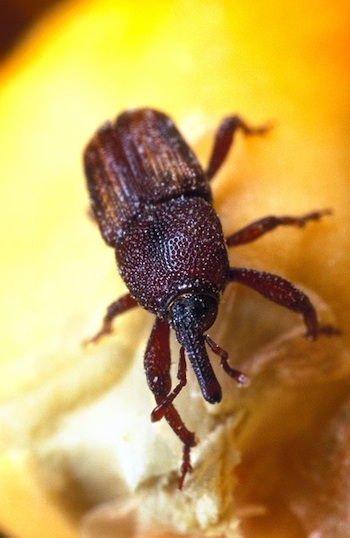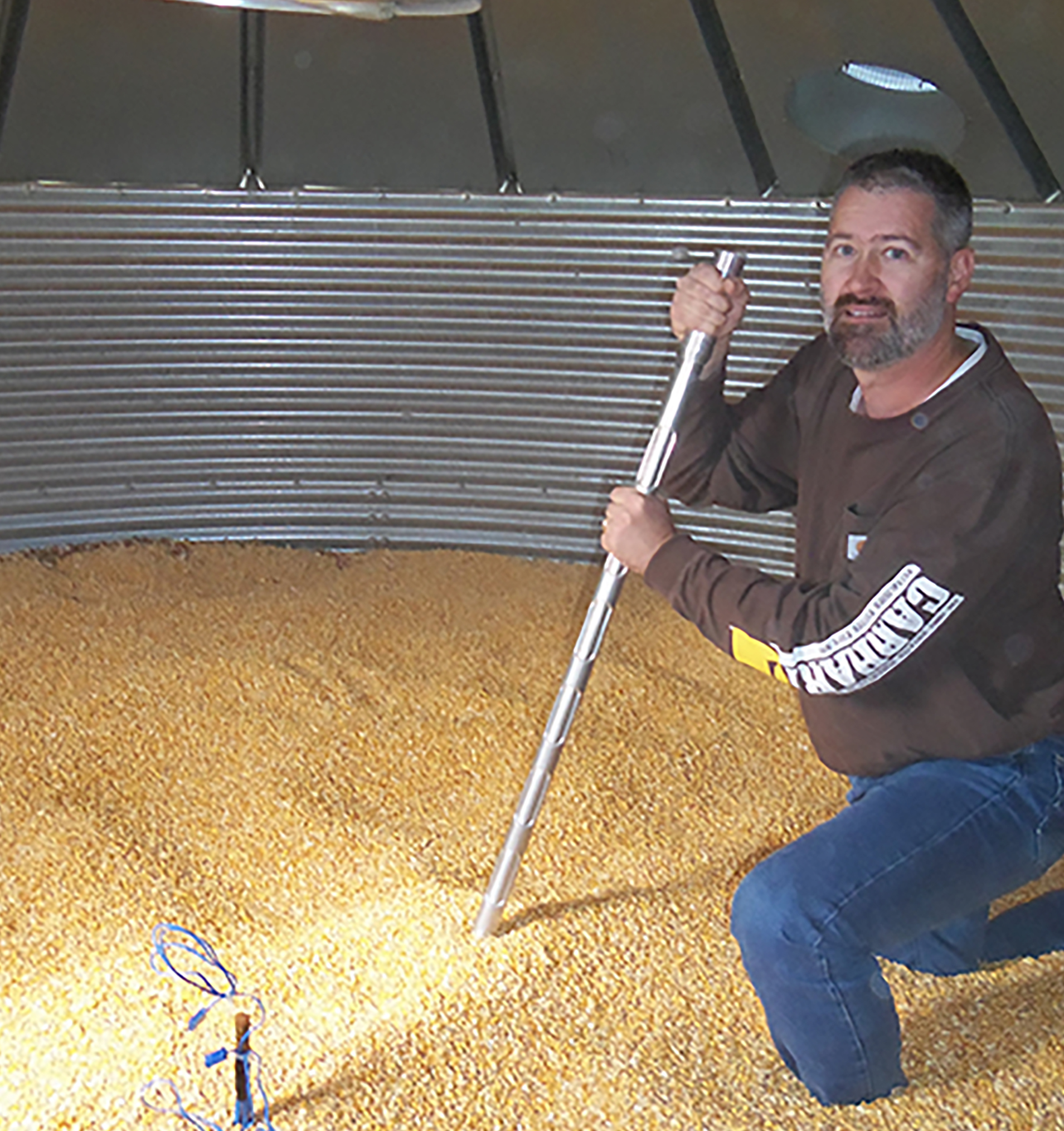A small weevil that lives inside corn kernels is costing Georgia growers millions of dollars each year. A University of Georgia scientist has teamed up with farmers and county Extension agents to put a stop to the maize weevil, the No. 1 insect pest of stored corn.
“The maize weevil’s entire life cycle is centered on one kernel of corn,” said Michael Toews, the UGA entomologist working to control the pest.
A female maize weevil chews a hole and then lays an egg inside the kernel. She seals the egg in the kernel so that it’s hidden from view, making detection difficult. When the egg hatches, the young, hungry weevil starts eating away at the valuable commodity. An adult weevil emerges at the end of the life cycle and chews its way out of the kernel.
“There is only a shell left after a maize weevil completes development,” Toews said. “Losses up to 10 percent can occur as result of maize weevils.”
The weevil infests the corn in the field and continues to develop after the corn is placed in the grain bin for storage.
Due to the low price when stocks are most abundant, growers typically store grain in bins immediately after harvest. The corn can be stored up to nine months and then sold when prices improve.
To make matters worse, maize weevils can complete a new generation in just 25 days. Their maximum rate of increase is a factor of 25, meaning if there are only 25 maize weevils in January, they can reproduce to 625 by February and 15,625 by March, he said.
To control the pest, Toews is evaluating grain protectants — insecticides that are applied at very low rates (as low as 1 part per million) to prevent maize weevils from eating stored corn. “We are looking at different chemistries to find solutions that are most appropriate for south Georgia and Alabama conditions,” he said.
The length of time the insecticides stay active is also important. Some last only a few months, while others can last up to a year.
UGA grains agronomist Dewey Lee said maize weevils have been a big problem for corn growers. Lee suggests that growers look for maize weevils around the edges of the field first.
“Farmers should harvest the edges of their field and separate that grain from the rest to try and prevent maize weevils from infesting the rest of the crop,” he said.
Managing the temperature of the grain inside the corn bins by using aeration can also help by slowing the insect’s life cycle. Keeping the corn bin below 50 degrees will, literally, stop the weevils in their tracks. At those temperatures, the insect can no longer move or develop. But in southern Georgia, it is hard to maintain such a low temperature.
“Growers should take advantage of any cool spells during September and October,” Toews said. “Get the grain cooled as quickly as possible.”
Prior to filling the bins, it is essential that growers thoroughly clean out any old grain and clear vegetation around the outside of the bin where insects could be, he said. Maize weevils are strong fliers and can easily move from spilled grain and residues into the newly harvested crop.
According to the UGA Center for Agribusiness and Economic Development, Georgia’s farm gate value for corn was more than $510 million in 2013.
(Jordan Hill is an intern with the College of Agricultural and Environmental Sciences.)









